
Keeping your motorcycle looking good helps increase the satisfaction of ownership and also keeps up its value. Having paint starting to peel on the tank isn’t something anyone wants to see and many are afraid the fix is going to be expensive.
Why is my motorcycle gas tank paint peeling? A motorcycle gas tank paint peels mostly because of age. Adverse conditions such as direct sunlight and humidity can eventually cause a tank’s paint to peel. Chemical spills and low quality paint are also culprits that lead to premature peeling.
Wear and tear on a motorcycle is normal. No matter how careful you are, your motorcycle will likely change over time. While you may not be able to prevent all signs of wear and accidents, you definitely can reduce the amount of visible wear.
Even if you are taking great care of your motorcycle, maybe you have noticed your paint is starting to peel right off of your gas tank. Why is that happening? Is there anything that you can do to fix it or slow it down? Let’s dive a little deeper into these questions.
Why Is My Motorcycle Gas Tank Paint Peeling?
So it started happening to you. The paint, whether it be the actual paint or the clear coat, is starting to flake and peel. But why? There are a lot of different factors as to why this may be happening.
First off, let’s note that your paint might just be old. Overtime, your paint will deteriorate as it’s exposed to different elements. These include the sun, rain, snow, dirt, and wear and tear. As the paint gets old, it can also get brittle and start to peel off. If it’s peeling just because it’s really old, there’s not a whole lot that you can do for it other than sanding it down and repainting it again.
Even if your paint isn’t super old, it can start to deteriorate prematurely if it’s exposed to very adverse conditions. Being in very intense direct sunlight (places like Las Vegas or Phoenix) can accelerate its deterioration. Likewise, being in extremely humid places like in the south can also speed up deterioration. So even if your motorcycle isn’t super old, if it’s exposed to a harsh environment frequently, your paint might start peeling much sooner.
Your tank paint could also start peeling if you have gotten some sort of chemical on it that will eat through your paint. One good example of this is brake fluid. The master cylinder on motorcycles are usually located right by the handlebars which is very close to the tank. If you or previous owners have ever needed to replenish the brake fluid, it would make sense that some may have accidentally gotten on the tank. Brake fluid is also extremely corrosive.
Another example would be gasoline. Most motorcycle tanks have a clearcoat on them that are made to withstand gasoline drips and leaks. But constant exposure to gasoline can ultimately break it down.
Lastly, your paint might just be peeling because it is simply low quality paint. Certain paints just aren’t intended to last very long. People will often opt for these lower quality paints because they are significantly cheaper. Even a low-quality paint may look good for a while but will deteriorate much faster than other paints. Motorcycle tanks require higher quality paint that can withstand extreme temperatures and exposure to certain elements.
How To Stop The Tank From Peeling Any Further
So, what can you do to slow down or stop the paint from peeling any further on your motorcycle? A lot of this depends on which layer is peeling. Is the actual paint peeling or is it just the clear coat? Let’s talk clear coat first. If the clear coat is hazy or white-ish in color, you may have a chance to wet sand that portion of the tank and simply recoat it with clearcoat. However, if the clearcoat has been peeling for a while or is cracked, the actual paint underneath is likely faded and no longer matches the rest of the tank.
If the actual paint has started peeling, the only way to 100% fix the issue is to sand the gas tank down and repaint. Although many people may not be interested in doing this, this is the only surefire way to fix the issue. If the peeling it not very bad and you just don’t want it to get any worse (or you don’t want to spend any money on it right now), there are a few things that you can do to stop the peeling from getting worse.
The first thing you can do is remove the pieces of paint that are peeling. You can use a scraper or something similar to get the peeling pieces off. Be careful not to peel off the paint that isn’t coming up yet and be sure not to scratch up the remaining paint or the metal underneath. This will help prevent the peeling paint from pulling up the rest of it.
Next, you can smooth the surface where you got the peeling paint off. Use fine grit sandpaper to work on the area to smooth out any rough edges. Even if you don’t want to completely repaint the gas tank, you can still touch up certain spots. Regardless of whether you are wanting to completely repaint it or just touch it up, you are going to want to thoroughly wash it with soap and water before attempting to put paint on to ensure that there is as good surface for the paint to adhere to.
How To Repair/Repaint The Peeled Section Of Paint On A Tank
So, you have decided that you want to repaint your gas tank, either completely or just certain bad spots. First, make sure that you properly prepare the gas tank. The biggest determining factor in how your paint will end up is how well you prepare the tank. You will want to sand the areas being painted first; the surface needs to be as smooth as possible. This method applies to repainting the whole tank, too. Also make sure that you tape off the gas cap; you don’t want any paint or dust getting in there.
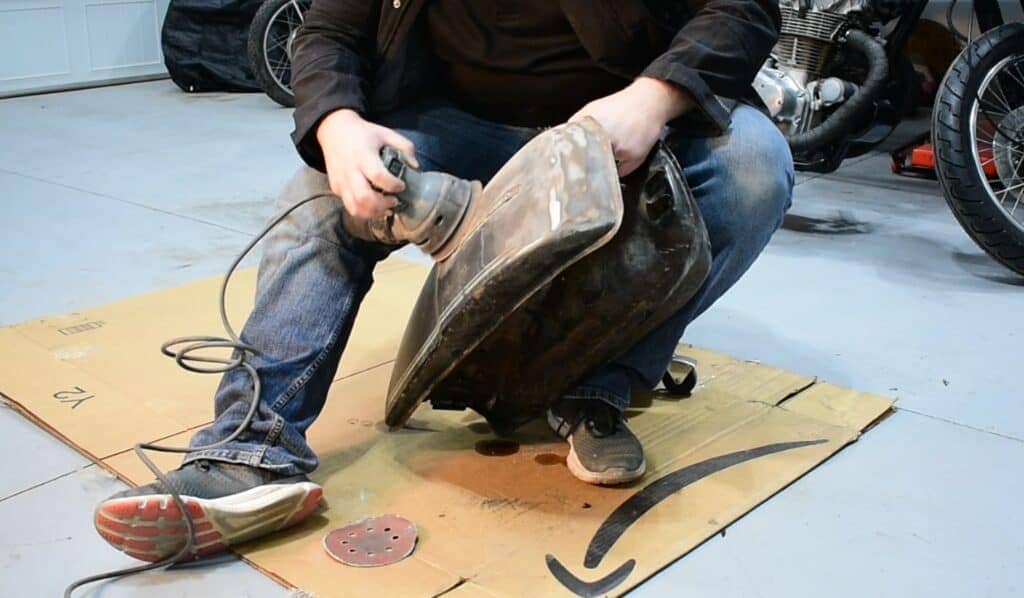
Once you have sanded it down and are happy with the finish, it is time to clean it up. You want to remove any sort of oils or greases from the gas tank to ensure that the paint sticks well. You can use regular dish soap to do this as it is great at removing grease. There are also specialized soaps just for this very purpose that you can buy.
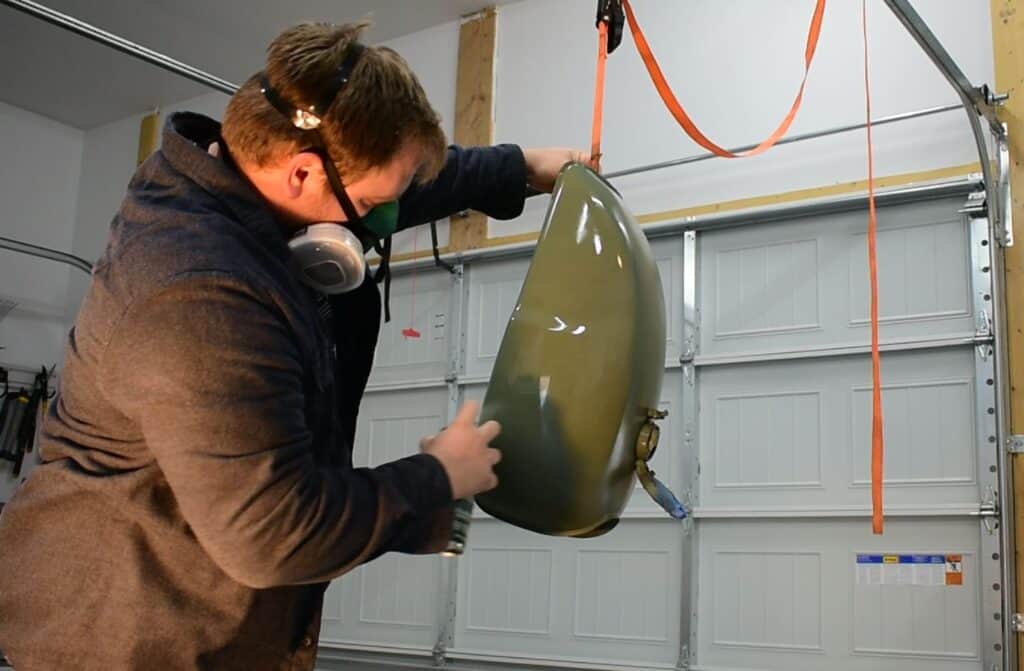
After washing it and ensuring that it is dry, you are ready to apply primer. Be sure to choose a high-quality primer. This helps the paint to stick well to the metal. Also be sure to follow the instructions on the can of primer as far as the conditions you should spray it in, how many layers to add, and how long it should dry for. Once you’ve finished with the primer, wet sand the tank with fine grit sand paper to ensure there are no sandpaper marks left. Wash off the dust and wait for it to dry.
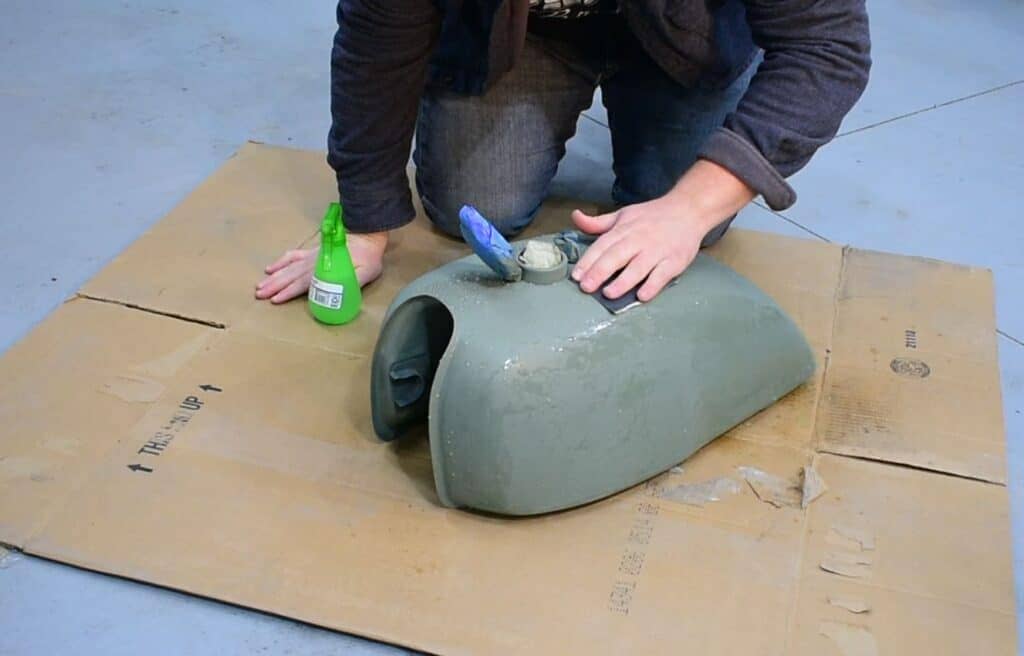
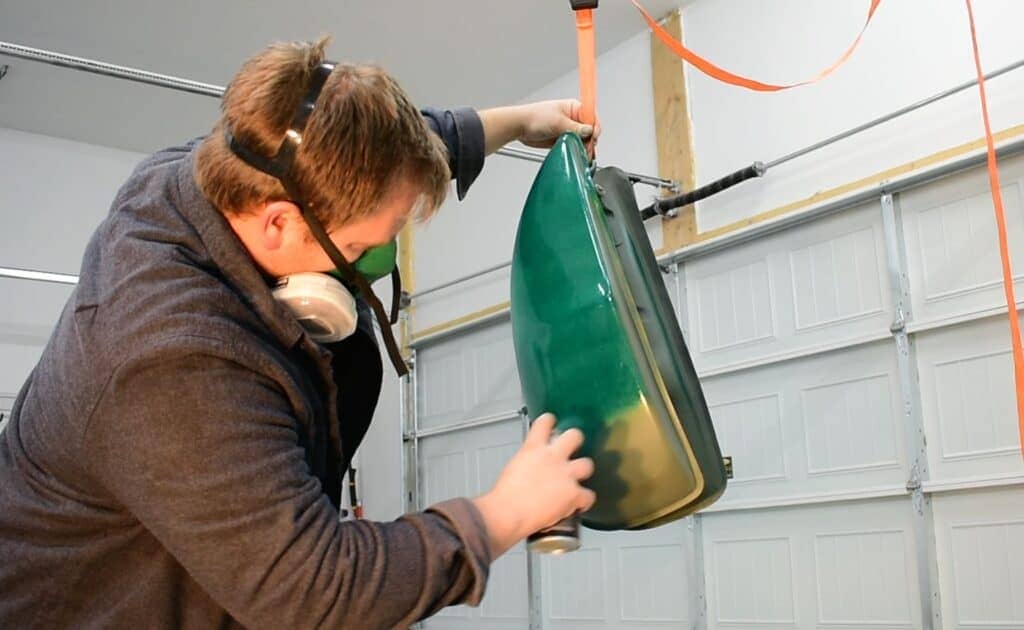
Once the moisture from wet sanding is dry, apply another layer or two of primer. Once the primer is dry, you can start painting. Likewise, you will want to ensure that you have selected a high-quality paint so it lasts as long as possible (see what paint I recommend for gas tanks by clicking here). Apply the paint to the gas tank in thin even layers. Wait for each coat to dry before putting the next coat on and follow the instructions on the paint as well to ensure you are applying it properly.
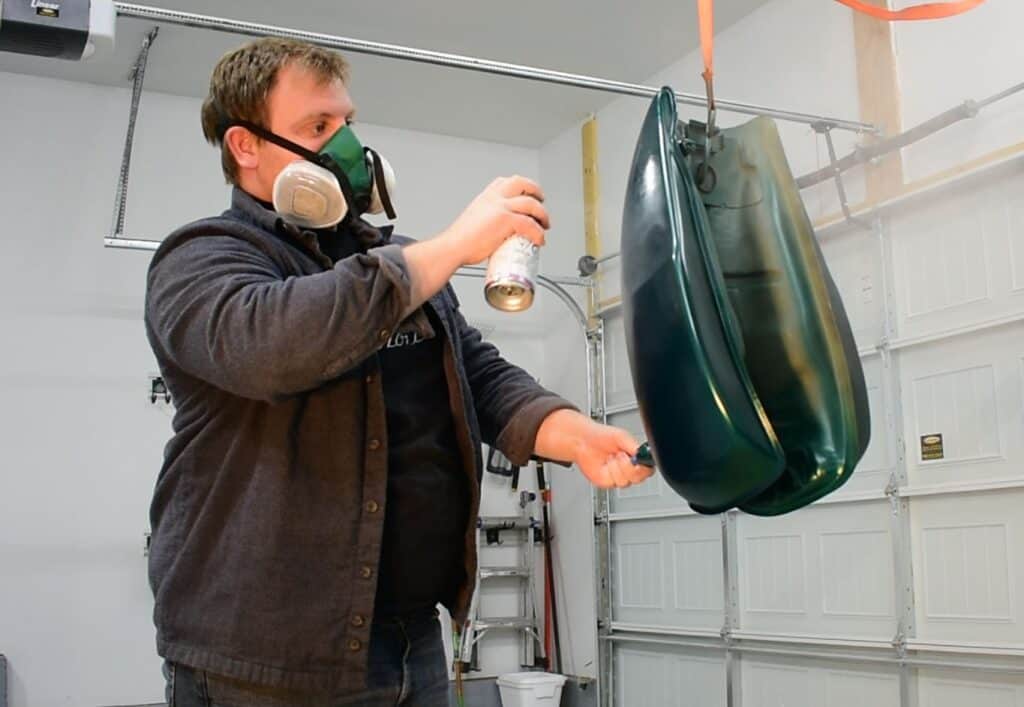
Once your paint has dried, all you need to do is apply either a clear coat or a protective sealant. This helps protect your paint over time. This step is critical in ensuring your paint lasts for years to come.
Is It Common For the Paint On A Motorcycle Gas Tank To Peel?
Unfortunately, peeling paint on your gas tank isn’t super uncommon. This happens to lots of people’s motorcycles, especially as they get older. You can help minimize the peeling by making sure you protect it from the elements, especially from the UV rays from the sun as well as swiftly wiping away gasoline or other chemicals that spill on it.
Also note that certain motorcycles are more susceptible to this than others. Some motorcycles will have their paint stay intact much longer than others regardless of the environment that they are in. This is due to a higher-quality paint job and a better design done by manufacturers, especially as technology improves in this realm.
